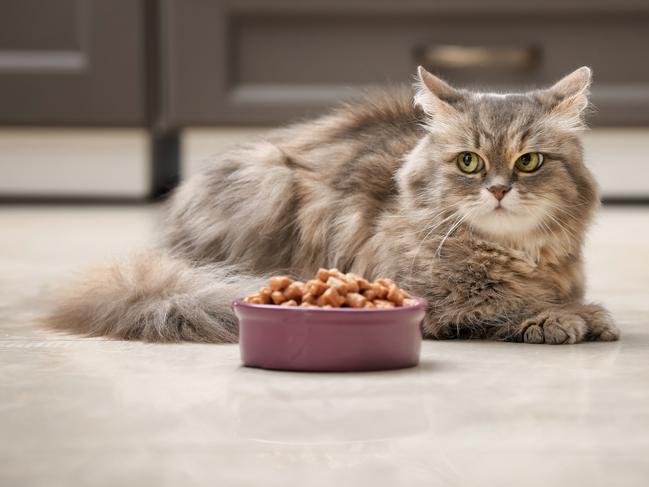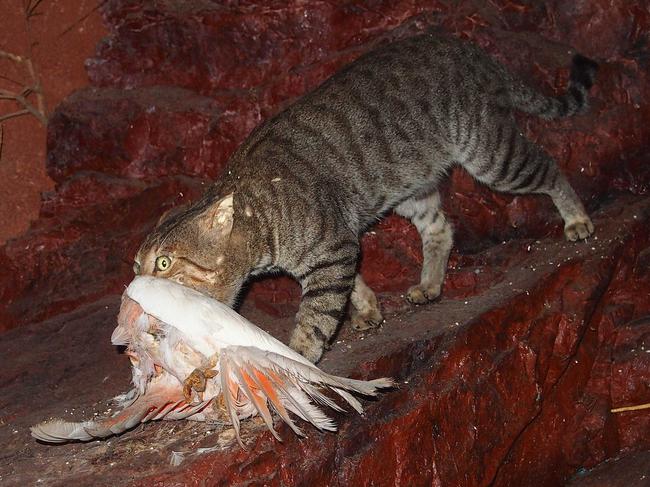Talking Point: Keep kitty inside for all our sakes
BOB HOLDERNESS-RODDAM: Research shows cats roam further while evidence grows for their role in loss of wildlife

Opinion
Don't miss out on the headlines from Opinion. Followed categories will be added to My News.
OUR youngest son recently acquired a cat, Polly. Polly is a delightful girl who came from the Ten Lives Cat Centre. However, like pretty much all domestic cats, Polly takes an acute interest in the birds in our garden. For this reason she is confined indoors, or in a special cat enclosure in the garden. It’s a case of, you may look at the goods, but don’t touch.
Some people say that keeping cats indoors is cruel. But both the RSPCA and Ten Lives Cat Centre support the idea of confining cats, for their own safety. Cats that are allowed to roam are more likely to be hit by cars, get involved in fights or catch diseases.
The other side of the coin is that cats often injure wildlife or play with their victims before killing them — clearly cruelty is involved here.
There are other vital reasons for restraining cats. The CSIRO published a book by highly regarded scientists John Woinarski, Sarah Legge and Chris Dickman. Cats in Australia: Companion and Killer is a thorough review of the research into the effects of cats on wildlife in Australia since their introduction by early European settlers. It is clear that feral cats and pet cats that are permitted to roam have been key factors in destruction of wildlife around Australia and overseas, driving several species into extinction.
Evidence comes from a number of sources. To begin with, there was a major reduction in the number of mammals as cats fanned out across Australia from their introduction sites at Sydney in 1788 and Perth in 1830s. Note that foxes, also implicated in the loss of some species, were not introduced until the late 1800s; but authorities differ in the precise dates. What is clear is that there was a decline in several native species well before foxes arrived.

Further evidence implicating cats in species loss comes from our many offshore islands. Species present on islands without cats have survived, even when they have disappeared from mainland habitats. Conversely, several wildlife species have disappeared from islands where cats were present, including seabirds that traditionally nested there. When cats were removed, the seabirds frequently returned as nesting species.
Similar evidence comes from areas fenced to exclude cats, for the purpose of either protecting surviving populations of threatened species or those reintroduced from another location.
So long as cats were kept out, those inside the exclosure fencing survived or even increased their populations. But if one or more cats breached the fencing, the protected species rapidly declined.
Several analyses of cat faeces also implicate cats in the decline in several species, with their remains found in far more cat faeces than in dingo or fox faeces.
Several studies have tried to estimate the amount of wildlife that cats killed, and the distances roamed, particularly at night. Earlier studies tended to rely upon reports from owners regarding prey brought home. This has turned out to be unreliable, because many cats bring only some of their kills home, and in some cases none. The figure for prey brought home varies between the low 20 per cent to 30 per cent, depending upon the study. In a 2017 paper, John Woinarski and his colleagues reported that cats are killing 400 million birds per year.
Recent research into cat movements, using satellite tags and miniature cameras attached to their collars, indicates that some cats roam much further at night than previously thought, with many heading into bush patches almost a kilometre away. This confirms my own observations. We lived on a bush block on the edge of New Norfolk for 15 years in the 1970s and 1980s. I estimated that 600 cats were going bush to hunt each night. More recently I have used a trail camera to monitor wildlife in a local reserve in Austins Ferry, a regular appearance on these photos is a large ginger tom.
Cats also transmit diseases to wildlife, farm livestock and humans. The most serious of these is toxoplasmosis, spread via their faeces. Cats are an essential host during this pathogen’s life cycle, and the consequences can be serious. Affected individuals, human and other animals, suffer behaviour changes. These include an attraction to cats, thought to increase the chances of a cat catching an infected animal and becoming infected itself.
Toxoplasmosis in humans has been implicated in miscarriage in early term pregnancies, increased suicide rates and up to 30 per cent of schizophrenia cases. It is also a serious threat for people with reduced immune systems, such as organ transplant recipients, cancer patients and those with AIDS.
Toxoplasmosis is present in Tasmania in 84 per cent of feral cats, a far higher rate than for most other parts of the world. The reduction in Tasmanian devil numbers is thought to have enabled an increase in feral cat numbers. Present in several Tasmanian bird and mammal species Toxoplasmosis in quolls more frequent in areas of decline, than where they are still present.
Toxoplasmosis is common in livestock, causing abortions, stillbirths or newborn deaths in pregnant cattle, goats and sheep.
Many cat owners do the right thing and confine their cats to their own property, but the majority still let their cats roam their neighbourhood, killing wildlife and spreading disease. It is time to amend the forthcoming legislation to require people to confine their cats to their own property.
Bob Holderness-Roddam has a masters degree in environmental management and is a former Associate with the School of Geography and Environmental Studies, University of Tasmania.


